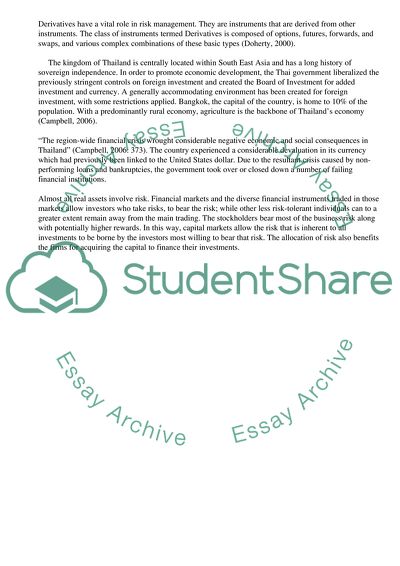Cite this document
(Use of Derivatives by Risk Manager for Protection of Company Based in Case Study, n.d.)
Use of Derivatives by Risk Manager for Protection of Company Based in Case Study. https://studentshare.org/management/1721480-derivatives-are-now-a-well-established-risk-management-tool-discuss-how-they-can-be-used-by-a-risk-manager-who-wishes-to-obtain-protection-for-his-company-wh
Use of Derivatives by Risk Manager for Protection of Company Based in Case Study. https://studentshare.org/management/1721480-derivatives-are-now-a-well-established-risk-management-tool-discuss-how-they-can-be-used-by-a-risk-manager-who-wishes-to-obtain-protection-for-his-company-wh
(Use of Derivatives by Risk Manager for Protection of Company Based in Case Study)
Use of Derivatives by Risk Manager for Protection of Company Based in Case Study. https://studentshare.org/management/1721480-derivatives-are-now-a-well-established-risk-management-tool-discuss-how-they-can-be-used-by-a-risk-manager-who-wishes-to-obtain-protection-for-his-company-wh.
Use of Derivatives by Risk Manager for Protection of Company Based in Case Study. https://studentshare.org/management/1721480-derivatives-are-now-a-well-established-risk-management-tool-discuss-how-they-can-be-used-by-a-risk-manager-who-wishes-to-obtain-protection-for-his-company-wh.
“Use of Derivatives by Risk Manager for Protection of Company Based in Case Study”. https://studentshare.org/management/1721480-derivatives-are-now-a-well-established-risk-management-tool-discuss-how-they-can-be-used-by-a-risk-manager-who-wishes-to-obtain-protection-for-his-company-wh.


